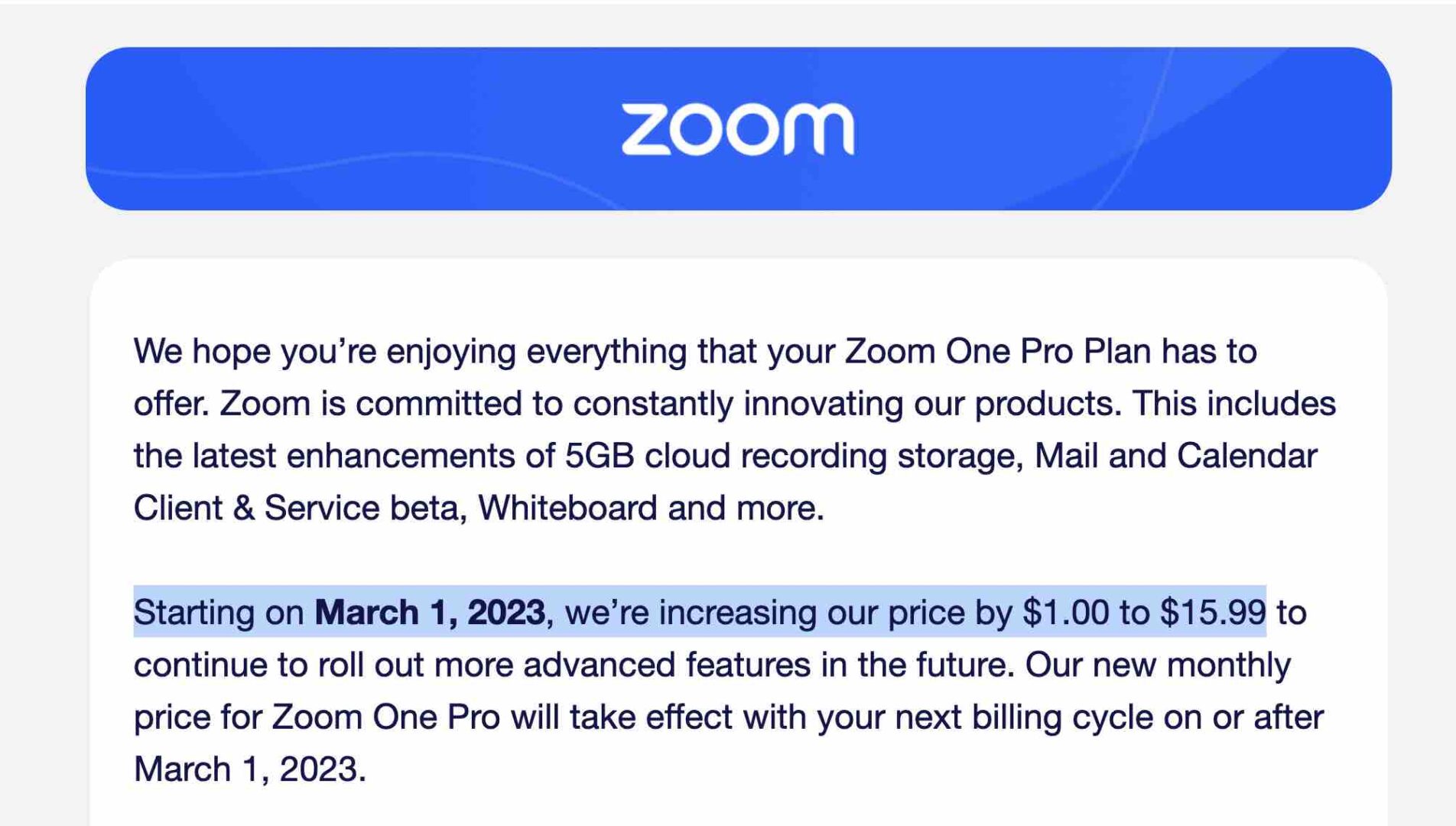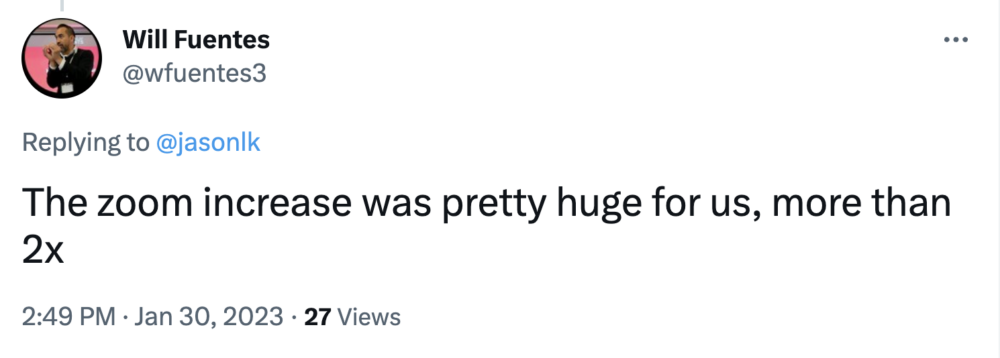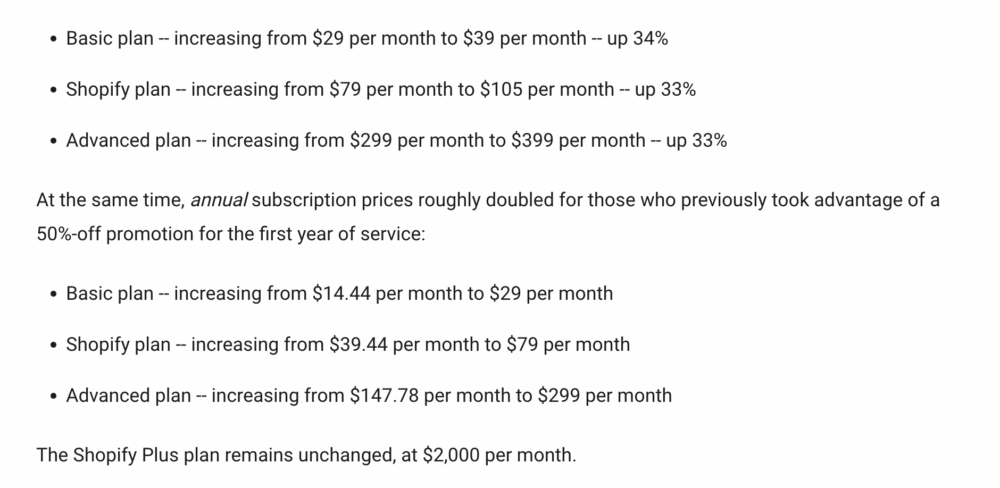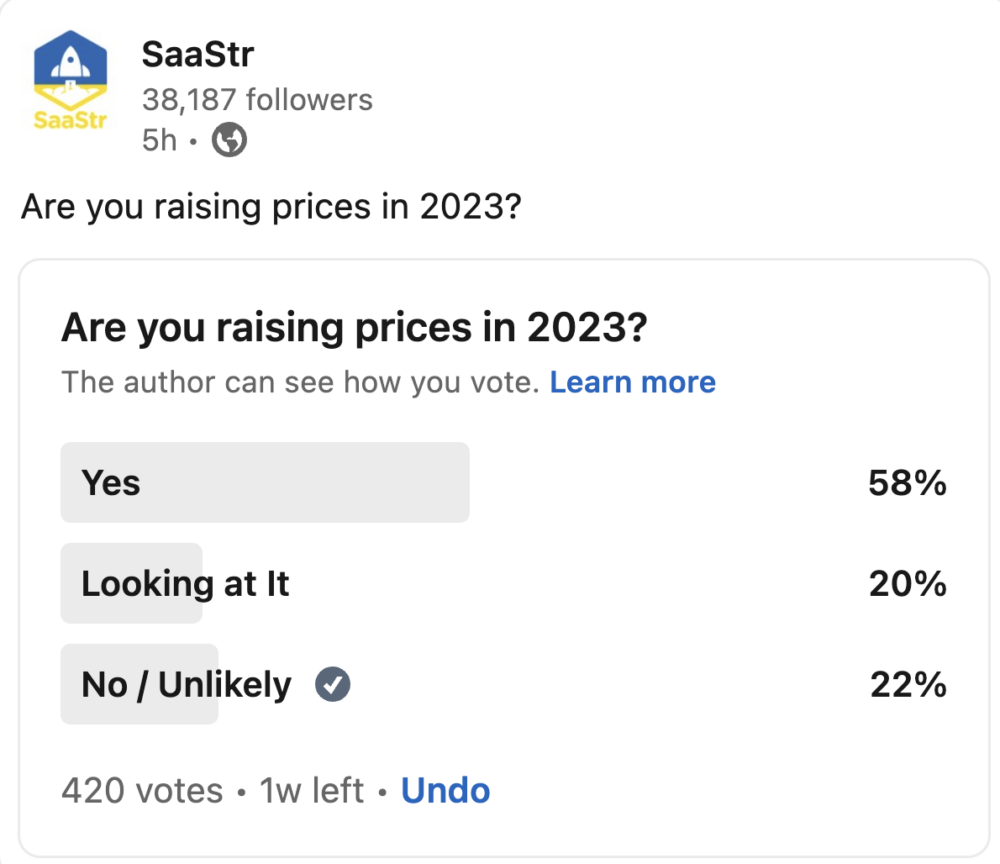So Zoom and Shopify are the latest SaaS leaders to do price increases — albeit very differently.
First up is Zoom. While some of the increases vary, the low-end plans are going up $1.00. Yup, $1.00. Although it’s more impactful than it sounds, because that’s an almost 7% price increase. More on that below. The SMB segment of Zoom has stopped growing, so going from ~0% growth to 7% growth actually might end up being huge.

Bigger accounts and enterprise pricing, in some cases, is going up much more:
Shopify’s increases are much, much bigger. They’ve raised prices 33%! Important to note they did not raise prices for Shopify Plus, their $2,000+ and up enterprise edition. So in some ways, a very different approach from Zoom:
While Shopify’s growth remains relatively strong and, in fact, accelerated in the back half of last year, the SaaS side of its business has slowed. (Merchant payments have become the bulk of not only its revenue, but importantly, have been growing twice as fast as SaaS revenues). So a 33% increase in the majority of its plans should have a dramatic impact on revenue in the coming 18 months:
They aren’t alone. Last year, Slack did its first material price increase as well, of 10%. And HubSpot raised prices 12%. More here.
Most of you are doing the same, or plan to, in 2023:
So it’s that time. One of the first things everyone wants to do in tougher times is … raise prices. It seems like the quickest fix, and in many ways, it is. If growth has slowed, like Zoom and Shopify, it almost automatically gives you a huge boost the next 12-18 months. And if growth is strong, like HubSpot and Atlassian — it helps ensure it stays that way in more challenging times.
Just remember a few things:
- When you raise prices, they always at least consider another vendor. It gets forwarded around. And any customers on the edge of leaving, it’s often that final push. More on that here.
- Raising prices doesn’t get you more customers. So it doesn’t really change the health of your long-term business in most cases. Yes, it may help you hit a number. But if you are going long, most important is adding more happy customers.
- Raising prices isn’t always the easiest or best way to grow your NRR and your deal size. Oftentimes, adding an enterprise edition, or another product, or a critical feature you can charge for ends up adding more actual and perceived value. That customers are happy to pay for. No one is happy to pay a price increase, however. At best, they tolerate it.
- Increased pricing creates a “fake” NRR boost. It’s not really 100% real, since it doesn’t last after the price increase is propagated.
Most of us who have been around a while in SaaS, especially those who had a PLG or viral element to their product, resist price increases on their bases. Zoom, Slack, Shopify, and HubSpot all waited many, many years. Because with those apps, we see second-order revenue spread quickly. And you don’t want to do anything to slow it down.
Still, this is the year of price increases. At least be aware it’s not the magical solution, on its own, to other issues.
A related post here:





